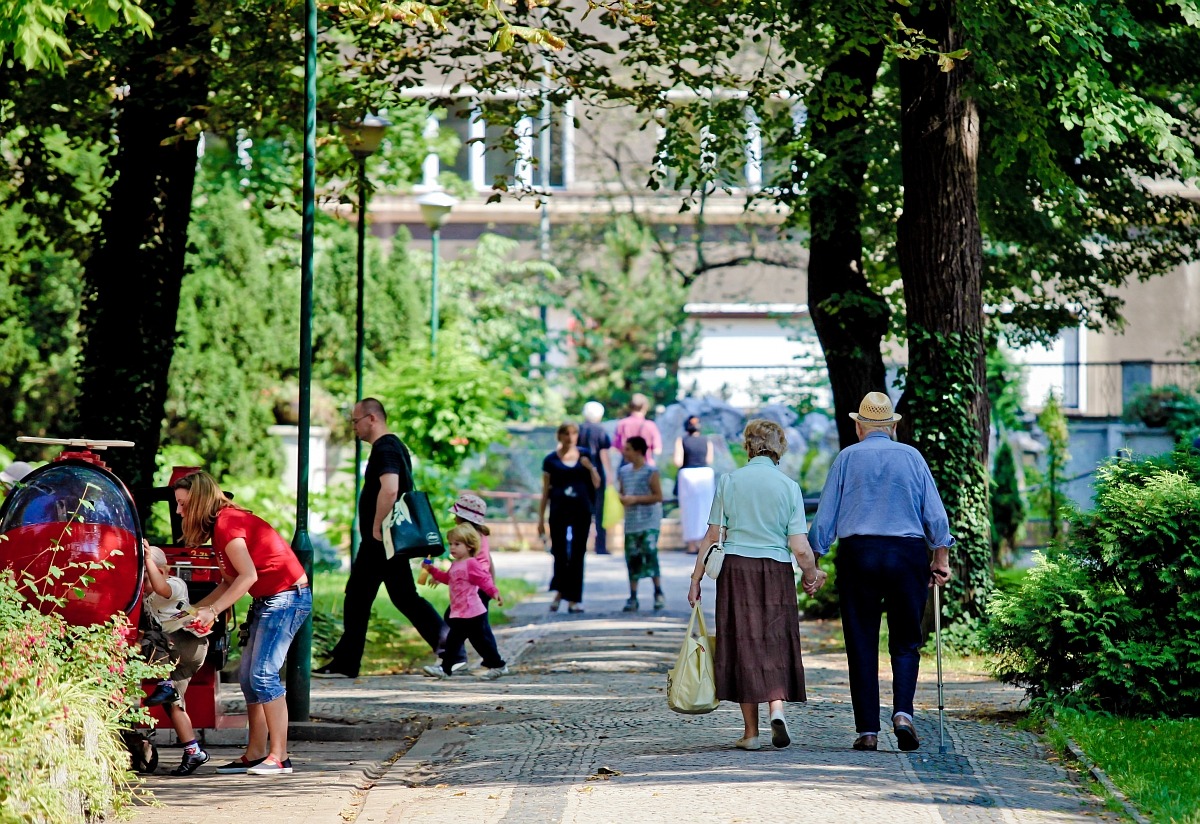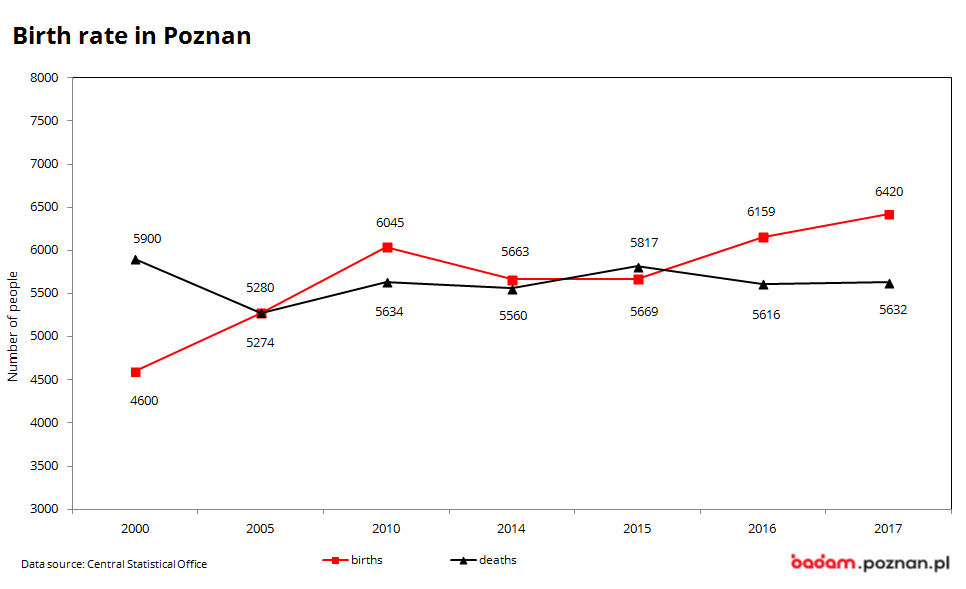
Poznań City Hall’s archive, photo. M.Nowaczyk
At the end of 2017, 538.6 thousand people lived in Poznań, which is 1.8 thousand less than a year earlier. There were 114 women per 100 men.
Age structure
The age structure of the population has been subject to gradual changes. The number of people in pre-production age (as a result of population bulge, which has been taking place from about a decade and which is the result of reaching the reproduction capacity by the generation of the bulge of the end of the 1970s and the start of the 1980s) and post-production age increased, while the number of residents in the production age decreased. In 2017, the share of the population in the production age was 59%. The most numerous group were people aged 25-44 (34%).
Population growth rate
The number of births is increasing. In 2017, 6,420 children came into the world, which has been the largest number since 1989, and approx. 300 more than the previous year. The number of births was higher than the number of deaths, which resulted in a fairly high positive population growth rate, which amounted to 1.5 ‰, compared to 1.0 ‰ a year before.
Migrations
Migration loss remained the only factor influencing the reduction in the number of inhabitants of Poznań, and amounted to 1.9 thousand people, or -3.5‰, in 2017. This indicator, after a period of decline, has remained at a similar level for 4 years. The majority of people who emigrated from Poznań chosen the area of the Poznań district for their new place of residence.
Balance of migration in Poznań
| 2000 | 2005 | 2010 | 2014 | 2015 | 2016 | 2017 | |
| Per 1000 inhabitants | – 0,6 | – 3,7 | – 5,5 | – 3,5 | – 3,5 | – 3,3 | – 3,5 |
Source: Polish Central Statistical Office

Population in a spatial system
In 2017, the largest increase in the number of inhabitants registered for permanent and temporary residence occurred in the area of auxiliary units of the Old Town (1.4 thousand people) and Jeżyce (about 1.1 thousand people). Out of 42 auxiliary units, there was a decrease in the number of residents, which in total amounted to over 0.5 thousand people, in the area of 8 units:
- Głuszyna
- Jan III Sobieski and Marysieńka
- Kiekrz
- Nowe Winogrady Północ
- Stary Grunwald
- Święty Łazarz
- Wilda
- Żegrze.
There was a reversal of the depopulation process of Śródmieście, covering the area of 5 auxiliary units:
- Jeżyce
- Ostrów Tumski-Śródka-Zawady-Komandoria
- Old Town
- Święty Łazarz
- Wilda
where the number of inhabitants registered for permanent or temporary residence increased by 2.1 thousand, to 110.4 thousand people, in one year.
Population compared to the Poznań District and other cities
In 2017, the population of Poznań and Poznań District increased to 920,3 thousand. In terms of population, Poznań is ranked 5th among Polish cities, after Warsaw (1,764.6 thousand), Kraków (737.3 thousand), Łódź (690.4 thousand) and Wrocław (638.6 thousand). At the end of 2017, the residents of Poznań constituted 15.4% of the inhabitants of the Wielkopolska Province and 1.4% of the country’s population.
Data of the NCPH
According to the latest National Census of Population and Housing 2011 (NCPH), the population structure was dominated by people with secondary and post-secondary education (37%). The number of people with higher education rapidly increased (from 20% in 2002 to 30% in 2011) with a decreasing share of people with basic vocational education (from 19% to 15%). More than half of Poznań residents (51.4%) were married, almost 1/3 belonged to the category single, and every tenth inhabitant of Poznań was a widowed person (9.7%). Divorced persons accounted for 6.5% of the population of Poznań.
